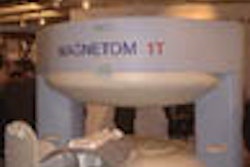DALLAS - Integrating PACS with radiology and hospital information systems opens the door to a host of clinical and work-flow benefits. But fully functional integration remains an elusive goal -- one that's exacerbated by vendors' lack of adherence to DICOM and HL-7 data exchange standards.
In addition, institutions moving towards electronic patient records often find that providing image access to referring physicians can raise serious questions about the appropriate management and integration of information. Believing that images should be included as part of an EPR, Massachusetts General Hospital has implemented an image data repository that's independent from the hospital's central PACS network. The repository consists of nine PCs that essentially function as a Web server for image access, according to Keith Dreyer, vice chairman of radiology, informatics, for MGH of Boston.
"We looked at putting (these image sets) inside the clinical data repository, but that wasn't really geared to holding gigabytes worth of image data," he said. "We looked at trying to query them from the PACS, but that really taxes the PACS very heavily. We also looked at putting them outside in the electronic patient record itself, but it's really an application that needs to be independent data."
Dreyer discussed MGH's experience during a session on integrating PACS with HIS at this week's annual Healthcare Information and Management Systems Society conference. The session was sponsored by the Society of Computer Applications in Radiology.
At MGH, radiologists choose which images are designated for inclusion in the EPR, and those images are sent to the image data repository, where they are compressed using lossy techniques at ratios of 10:1 to 20:1, Dreyer said. When clinicians request images, a request is sent to the image data repository, which returns the image.
As healthcare institutions ponder the implementation of sophisticated PACS/HIS/RIS systems such as the one deployed at MGH, they'll be able get help from future developments in the Integrating the Healthcare Enterprise initiative, sponsored by HIMSS and the RSNA. In IHE's second year, tasks such as DICOM structured reporting -- a mechanism that embeds image links inside a text report -- are expected to be added, Dreyer said.
An "image available" event will likely be added as well. This feature will generate messages that are sent to the EPR, alerting it to the availability of images for review by the clinician. Other report management benefits are also expected to be added as part of IHE, Dreyer said.
"Report management from IHE is dealing with the creation, management, repository, and display of that report, so you can imagine an integrated workstation where the radiologist could view images, and also be able to create a report," he said. Other PACS experts agree on IHE's potential for improving data integration.
"The RSNA's and HIMSS' effort to establish a consensus agreement on the use of these standards allows us to further refine our ability to streamline and optimize workflow, and improve our bottom-line savings, which allows us to do more with less," according to Dr. Eliot Siegel, director of diagnostic radiology at the Baltimore VA Medical Center. "It can also significantly improve patient care."
By Erik L. RidleyAuntMinnie.com staff writer
April 13, 2000
Let AuntMinnie.com know what you think about this story.
Copyright © 2000 AuntMinnie.com



















